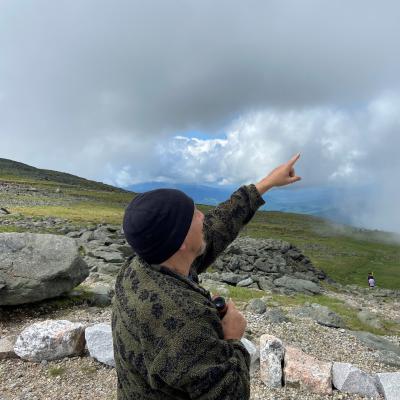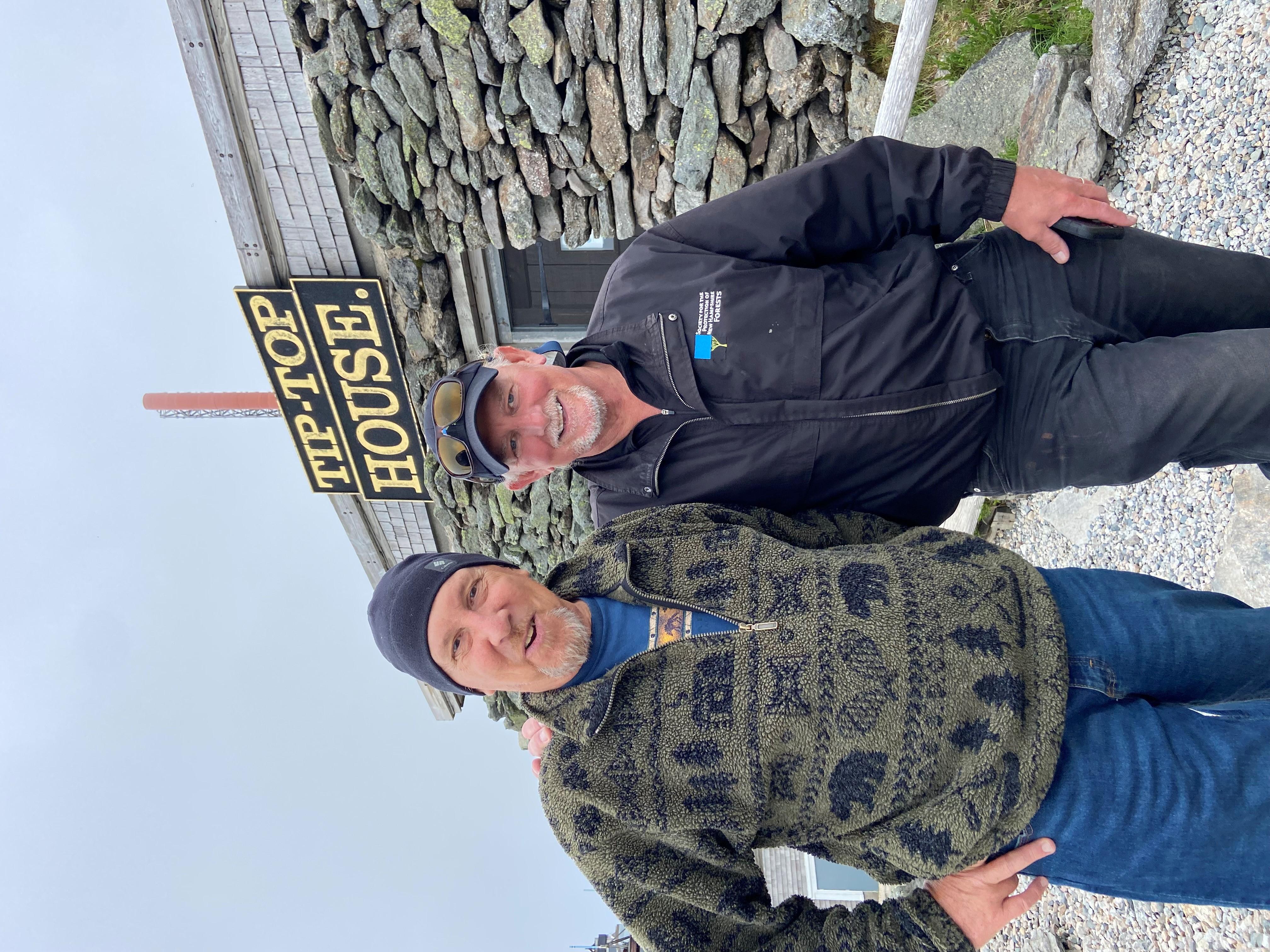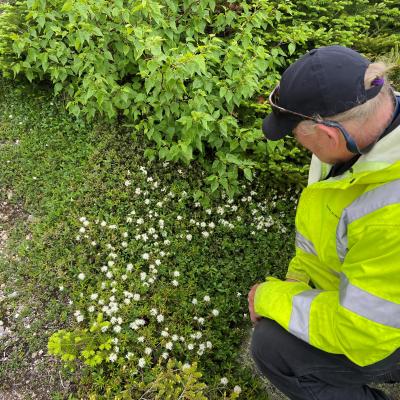- Tags:
- Wildlife,
- Something Wild

(Photo: Martina Oefel)
The Something Wild team is above treeline on Mount Washington, exploring the ecological zones of New England’s highest peak.
While many visitors focus on summiting, Chris Martin of NH Audubon and Dave Anderson of the Forest Society are examining how both flora and fauna vary as the elevation changes.

There are only 13 square miles of alpine habitat in the northeastern U.S., and half of it is in the White Mountains. Dave and Chris are starting near the top of the Great Gulf Trail at 6,000 feet in elevation, on a northwest-facing slope just below the summit.
“The moment we got out of the van, Chris zeroed in on the aerial display flight of an American Pipit,” says Dave Anderson. Because there are no trees to perch in, male pipits use flight displays to defend their territory and attract a mate.
The American Pipit is a small, brownish-gray bird, slender and streaked. They resemble sparrows, but are in a separate family of birds. “They amble through sedge meadows, and eat all sorts of insects in the summer season,” says Dave.
American Pipits are ground-nesters, and east of the Rocky Mountains they are believed to nest only on Mount Washington and on Maine’s Mount Katahdin. Pipits are listed in New Hampshire as a species of “Special Concern.”
“I've actually searched for these guys for days trying to find nests,” says Chris. “The thought that there might actually be a nest we could just walk up to is just so impossible.”
The ground cover above the treeline includes Bigelow's sedge — a high-altitude species that resembles a tough and wiry grass with three-sided stems. And these sedges are the favorite food of the caterpillars that become alpine butterflies.
By chance, we bump into Heather Siart, a graduate student at UMass Amherst, walking in the sedge meadows holding a long pole. She’s doing research for New Hampshire Fish and Game about another species found only in high alpine sedge meadows in the Presidential Range: the small, gray, White Mountain Arctic butterfly.
“They are a genetically glacial relict species, so they became genetically isolated” here on Mount Washington, she says. “We do research to better understand how they use this habitat, including: are they using any of the rocks? Are they just using these sedge meadow fields? And then how do we help manage them better? And are they being affected by climate change up here?”
Siart explains how the long pole helps in her research. “As we walk through these habitat areas, we count any individual that we see 5 meters to our left and 5 meters to our right. And then we put it through some fancy statistics and modeling programs, and that helps us get an estimate of the population and the density through the area.”
The White Mountain Arctic butterfly is listed as “threatened” by New Hampshire Fish and Game.

If you hike above treeline later in the summer, and you see a bright orange flutter, it’s likely the White Mountain Fritillary, another endemic butterfly only found above 4,000 feet in elevation.
Adult fritillaries feed on the nectar of alpine goldenrods and asters. But biologists still don’t know what plants their caterpillars feed on. For that reason among others, they’re listed as “endangered” in New Hampshire.
Dave observes that the few species specialized for life in the high alpine does not include trees. “Not even a willow. We are at the limit of tree growth and the beginning of a true Arctic ecosystem. Every thousand feet of elevation you gain is the equivalent of [traveling] about 400 miles north. So the difference between the bottom at 2,000 feet and the top at 6,000 feet is 1,600 miles – that puts you up at Hudson Bay.”
After marveling at pipits and learning about butterflies, the team took a quick trip to the summit for a selfie before heading down to 5,500 feet to check out the alpine garden on the east side of the mountain.
The flora of the alpine garden creep low to the ground, and only reach upward when in the lee of boulders that block the wind. The “big three” alpine flowers are Diapensia, Lapland Rosebay, and Mountain Avens. Robbins Cinquefoil, a rare alpine plant, is found nowhere else on earth.

Dave notes that at the peak of blossom in the alpine garden, which is in early June, "you've got that mix of colors and people looking for that marquee photo where there's white, yellow, pink and purple all at the same time.”
Some plants here are adapted to living months of the year completely buried in snow. That way, their leaves are protected from the desiccating effect of the harsh winds this mountain is famous for.
Chris was able to identify many of the plants in the alpine garden thanks to one of his favorite alpine resources, the AMC Field Guide to the New England Alpine Summits.
Although the high alpine is an unforgiving environment, this plateau actually nurtures plants that can withstand cold and wind. But many are not hardy enough to withstand the trampling feet of hikers.
In our next episode, we'll explore the forest ecosystems on Mount Washington.
- Thanks to Kevin Devine, the Director of Operations at the Mt. Washington Auto Road, who made it possible for the Something Wild team to explore the ecological zones and shared his knowledge of the area.
- Something Wild is a partnership of the Forest Society, NH Audubon, and NHPR.
